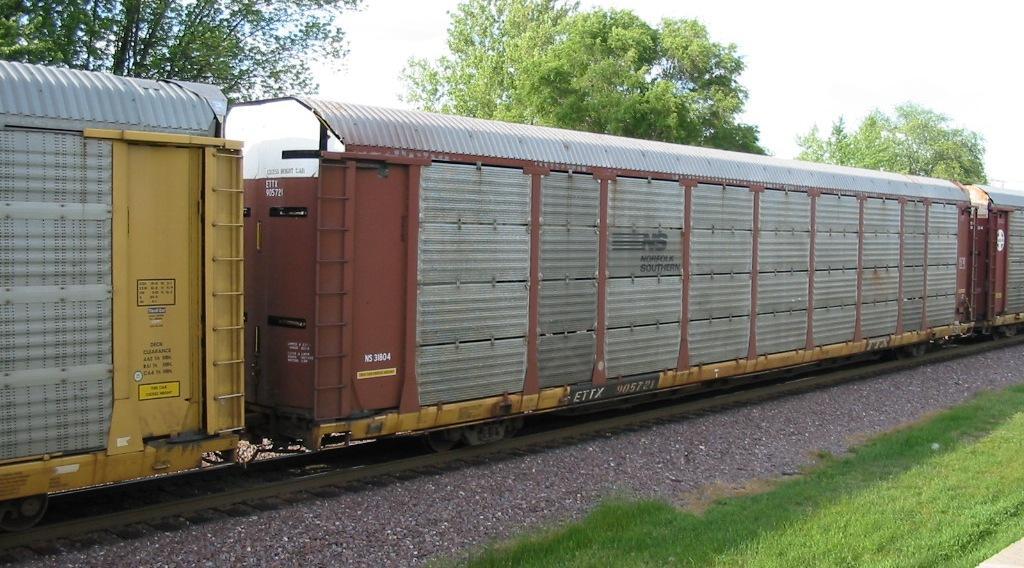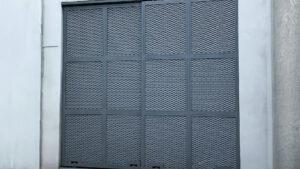The expansive and intricate railway industry possesses a vital component that often remains in the background: perforated metal. At first glance, this material might seem simple, but it plays a crucial role in the safe and efficient operation of trains. At NEW METALS INC., we specialize in producing this invaluable material for the railway sector.
Perforated metal, renowned for its versatility and durability, is adaptable for a wide range of applications. Its unique design, characterized by precise perforation patterns, offers undeniable benefits in terms of weight, strength, and functionality. As leading producers in the industry, at NEW METALS INC., we focus on manufacturing perforated metal dedicated to various aspects of train construction and maintenance.
Within the railway domain, this product has multiple uses. Trains require components that are lightweight yet robust. In this regard, perforated metal is indispensable: its structure optimizes strength without unnecessarily adding weight. Train cars, braking systems, and ventilation are just some of the areas where perforated metal plays an essential role.
History of Perforated Metal in the Railway Industry
The history of perforated metal in the railway industry is one of ongoing innovation and adaptability. While the concept of perforating metals is ancient, its application in the railway sector has evolved significantly over time. At NEW METALS INC., we recognize the profound history of this material and its influence on the railway landscape.
Originally, perforated metal was mainly used in basic applications such as train car linings and in steam engine filtering systems. However, as technology advanced and the demand for faster, safer trains grew, so did the need for materials that were both lightweight and durable. That’s when perforated metal began to emerge as an ideal material option.

Different Types of Perforated Metal Used in the Railway Industry
Perforated metal comes in a broad array of types, each with unique characteristics suitable for various applications. At NEW METALS INC., we specialize in producing a range of these types tailored to the specific needs of the railway sector.
Stainless steel perforated metal is one of the most commonly used types. It offers exceptional resistance to corrosion, making it perfect for train components constantly exposed to the elements. Additionally, its durability and wear-resistance make it suitable for high-impact, long-lasting parts.
Perforated aluminum is another popular choice. This metal is notably lightweight, contributing to reduced overall train weight, thus enhancing energy efficiency. Despite its lightness, perforated aluminum maintains robust strength, making it a feasible option for various train components.
At NEW METALS INC., we also work with special perforated metals, such as copper or titanium, which are used for very specific applications like train electrical systems or areas requiring high resistance to extreme temperatures.
Each type of perforated metal we produce at NEW METALS INC. caters to the unique needs of different railway applications. With our vast experience and technical knowledge, we can advise and supply our clients with the best-perforated metal types for their particular projects.
The versatility and adaptability of these materials underscore the significance of perforated metal in the railway industry. At NEW METALS INC., we are proud to contribute to the railway sector’s efficiency and safety through our high-quality production of these vital metals.
Specific Applications of Perforated Metal in the Railway Industry
Perforated metal’s versatility in the railway sector is vast, with applications spanning various aspects of train manufacturing and maintenance.
In train car construction, perforated metal is extensively used. Due to its strength, durability, and weight-reducing properties, it’s integrated into seats, floors, walls, and ceilings production. Its use not only adds to the car’s structural resilience but also enhances energy efficiency.
Train brake systems heavily rely on perforated metal as well. Brake parts made from this material offer excellent heat dissipation, improving brake efficiency and enhancing train safety.
Another significant application is in ventilation systems. Perforated metal panels facilitate efficient airflow while blocking undesired elements, adding to passenger comfort and safety.
Moreover, perforated metal is used in train filtration systems. These systems are essential for filtering oil and other fluids used in train engines, ensuring efficient performance and extending the lifespan of these critical components.
Each application showcases the importance and adaptability of perforated metal in the railway industry. With its unique combination of strength, lightness, and flexibility, it remains an essential resource for progression and innovation in this pivotal sector.
Recent Innovations and Future Trends in Perforated Metal Usage in the Railway Industry
In the railway industry, innovation is a constant. Perforated metal is no exception, and its application has seen several transformations lately, with promising advancements on the horizon.
Furthermore, the development of new perforated metal materials, like lightweight metal compounds, might offer enhanced properties like increased strength and reduced weight. This could pave the way for new train design and efficiency possibilities.
These innovations and upcoming trends illustrate the continuous relevance of perforated metal in the railway domain. By embracing these advancements, the industry can continue evolving to meet efficiency, sustainability, and passenger comfort demands.
Conclusion
Perforated metal has established itself as an essential resource in the railway industry due to its durability, versatility, and contribution to energy efficiency. Its utilization in various applications, from train car construction to braking and ventilation systems, showcases its importance and adaptability.
Moreover, perforated metal production has witnessed significant advancements in recent years, driven by technological and design innovations. These progresses, combined with a trend towards sustainability and efficiency in the railway sector, forecast a bright future for perforated metal’s role in this domain.




